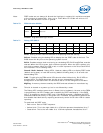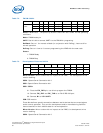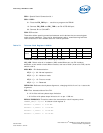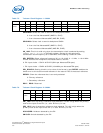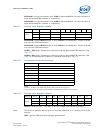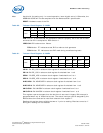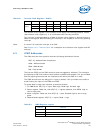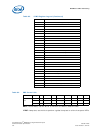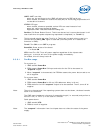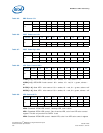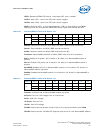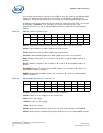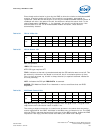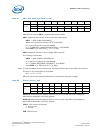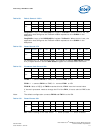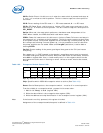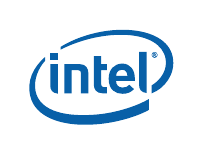
Intel NetStructure
®
MPCBL0010 Single Board Computer
October 2006 Technical Product Specification
Order Number: 304120 105
Addressing—MPCBL0010 SBC
UART: UART override;
when set, the serial port to the IPMC will take-over the SBC serial port.
when cleared, the IPMC will receive the data (RX) for monitoring purposes but will
not be able to transmit
LTYPE: LED type.
when cleared, whenever possible, amber LEDs are used instead of red.
when set, red is used instead of amber.
Applicable LEDs: Postcode/HardDisk/Debug LED.
PwrBtn: ICH Power Button Control. This bit can be set, but it cannot be cleared. It will
clear itself when the power sequencing requested is completed (i.e. TurnX=0).
Note: This bit should only be set when TurnX is 0. This bit will not work when a test-jig is
inserted and its TEST_ON# signal is asserted (Override power-on in absence of
firmware in IPMC).
TurnX: Turn ON or turn OFF in progress.
BoardON: Power status of the board
1 = Board ON
HTU: Hard Turn-Off. Turns off power supplies regardless of the chipset state.
Writing a 1 to this bit will turn off the power supply immediately.
On a Read, this will always return 0.
9.3.0.1 PwrBtn usage
For a power up:
1. IPMC sets bit PowerBtn
2. FPGA asserts PowerBtn ICH input and waits for the ICH to de-assert its
"suspend" output
3. When "suspend" is de-asserted, the FPGA de-asserts the power button and turns
off all supplies.
For a power down:
1. IPMC sets bit PowerBtn
2. FPGA asserts PowerBtn for 33 ms (ICH debouncer delay is 16 ms)
3. FPGA waits for the ICH "suspend" output to be de-asserted. Then it turns off all
supplies.
Note: There is no timeout and if the operating system does not shut down, the board remains
stuck in this condition.
The IPMC must implement a timeout of reasonable length (i.e. seconds) and perform a
hard turn-off (i.e. HTO=1) in the case of a timeout.
Quick power-down:
1. IPMC sets bit HTO.
2. FPGA turns off all supplies.
Note: The “suspend” information from the chipset does not reflect the state of the power
supply.



